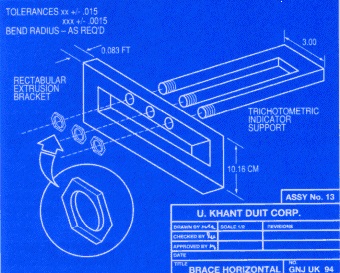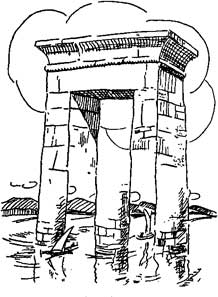不可能叉子(Seckel 2002,第151頁),也稱為魔鬼叉(Singmaster)、blivet 或 poiuyt,是一個經典的“不可能圖形”,最初由 Schuster(1964)提出。雖然叉子的每個叉頭(或者,在最初的作品中是“夾子”)看起來都很正常,但試圖確定它們的連線方式時,會發現有些地方嚴重不對勁。上面的第二張圖顯示了三個不可能的圖形:左下角的雙螺旋六角螺母,中間的三方盒,以及右上角的不可能叉子。
大約在 Schuster(1964)發現不可能叉子的時候,Mad Magazine 將其用作一個反覆出現的主題。他們對它的稱呼是“poiuyt”,這對應於從右向左鍵入的標準鍵盤的第三行。“poiuyt”在 20 世紀 60 年代在 Mad 中被普遍使用,表示荒謬或不可能。
Hayward 將這個圖形融入到一幅希臘柱子的畫作中(Gardner 1970,Robinson 1998)。
另請參閱
雙螺旋六角螺母,
不可能圖形,
不可能的細木工,
潘洛斯三角形,
三方盒
使用 探索
參考文獻
Ernst, B. Adventures with Impossible Figures. Stradbroke, England: Tarquin, p. 88, 1987.Fineman, M. The Nature of Visual Illusion. New York: Dover, p. 119, 1996.Gardner, M. "Of Optical Illusions, from Figures that are Undecidable to Hot Dogs that Float." Sci. Amer. 222, 124-127, May 1970.Jablan, S. "Set of Modular Elements 'Space Tiles.' " http://members.tripod.com/~modularity/space.htm.Robinson, J. O. The Psychology of Visual Illusion. New York: Dover, pp. 176 and 178, 1998.Schuster, D. H. "A New Ambiguous Figure: A Three-Stick Clevis." Amer. J. Psychol. 77, 673, 1964.Seckel, A. The Art of Optical Illusions. Carlton Books, 2002.Singmaster, D. "Don't Believe Your Eyes." Focus, Dec. 1994.在 中被引用
不可能叉子
請這樣引用
Weisstein, Eric W. “不可能叉子。” 來自 Web 資源。 https://mathworld.tw/ImpossibleFork.html
主題分類

